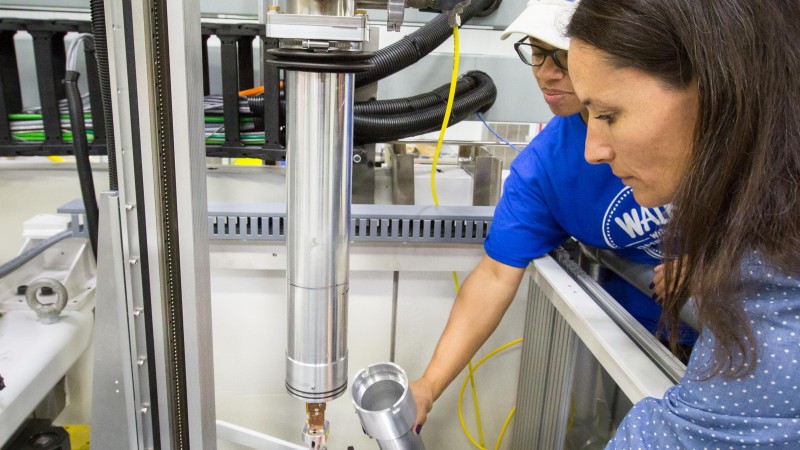A closed cycle refrigerator (CCR) has been recently commissioned as part of the IMAGINE instrument’s sample environment, expanding the capabilities of the instrument for neutron diffraction analysis of samples ranging from protein crystals to magnetic materials and supramolecules. IMAGINE is a single crystal diffractometer at the Oak Ridge National Laboratory’s High Flux Isotope Reactor, beam line CG-4D.
Before the CCR was introduced, IMAGINE’s design permitted a variety of crystallography experiments for large and small macromolecules at room temperature, but did not allow for researchers like Bryan Chakoumakos, a group leader in the ORNL Quantum Condensed Matter Division, to examine magnetic properties in new materials at low temperatures.
“Most molecules don’t order magnetically unless they are below room temperature,” Chakoumakos said. “There are some that do above room temperature, but the vast majority do below that, and that’s our region of interest.”
The newly added cryogenic capability, providing a temperature range from 4 to 450 degrees Kelvin, will in combination with IMAGINE’s detector coverage, enhance researchers’ ability to determine novel magnetic structures and reveal temperature dependent behavior of magnetism and other crystal structural properties.
For Flora Meilleur, the lead instrument scientist for IMAGINE and a structural biologist in the ORNL Biology and Soft Matter Division, the new capability provides a “freeze frame” technology for studying short-lived states that occur between enzymes and their substrates. Like Chakoumakos, she is eager to share the new capability with the SNS/HFIR user community.
“The cryogenic capability uniquely positions neutron crystallography to experimentally locate hydrogen atoms in enzyme reaction intermediates,” she said.
The CCR opens opportunities for new science, and the instrument team is looking forward to working with a diverse community of users.
Neutron Sciences Sample Environment team members John Wenzel and Doug Armitage worked with Meilleur and her team to develop this new sample environment capability.
HFIR is a Department of Energy Office of Science User Facility. UT-Battelle manages ORNL for the DOE’s Office of Science. The Office of Science is the single largest supporter of basic research in the physical sciences in the United States, and is working to address some of the most pressing challenges of our time. For more information, please visit http://science.energy.gov/. --- Heidi Hill





